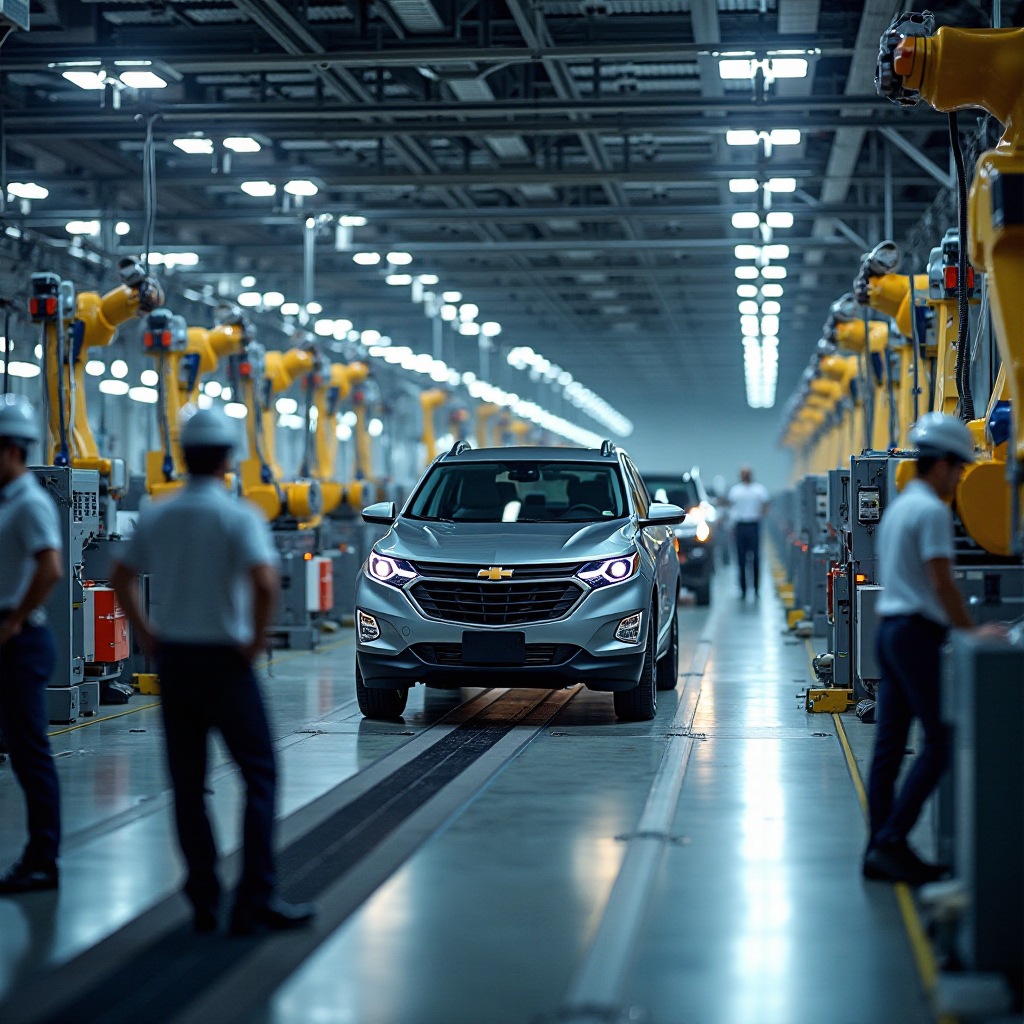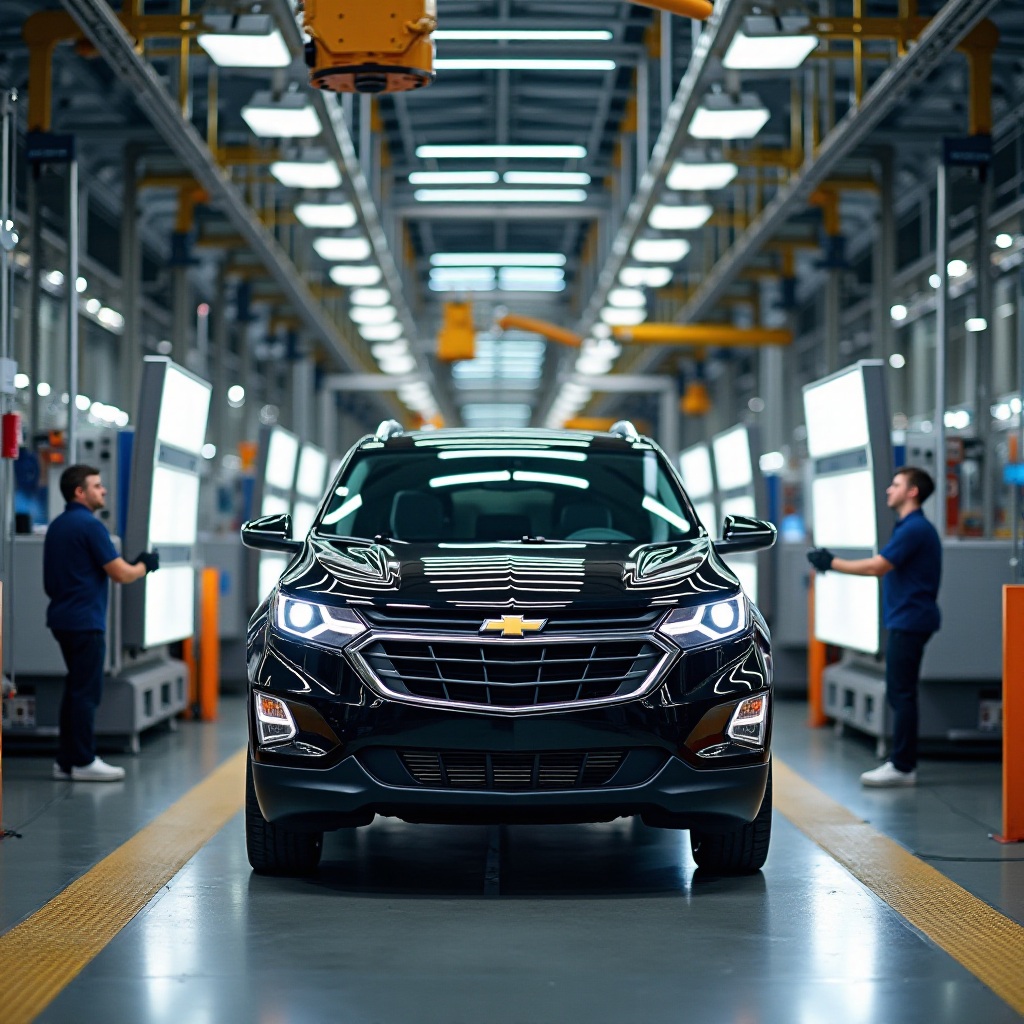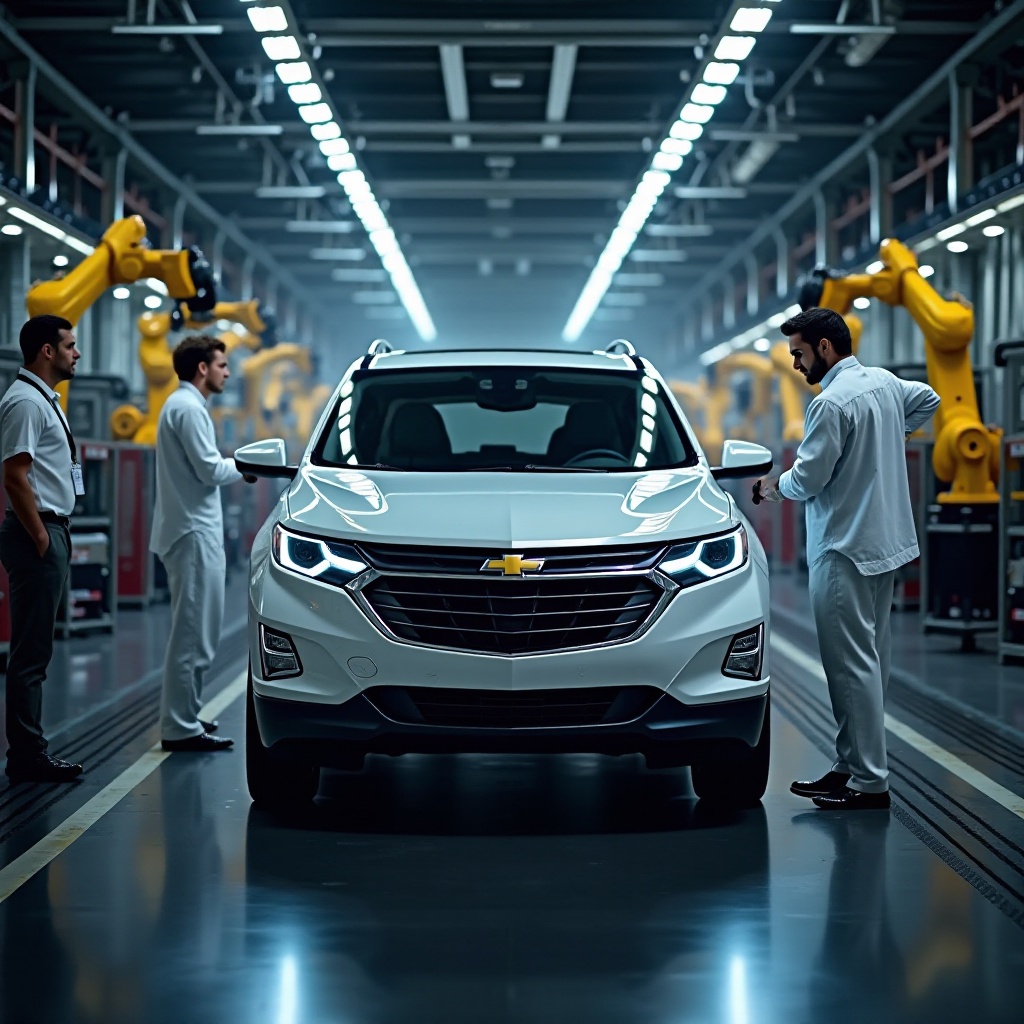Introduction
The Chevy Equinox is a staple in the SUV market, known for its reliability, performance, and modern design. If you’re curious about the origins of this popular vehicle, you’re not alone. Understanding where the Chevy Equinox is made offers insights into its quality, production ethics, and future innovations, particularly with the rise of electric vehicles. This blog delves into the key manufacturing facilities, production processes, quality control measures, and more.

Manufacturing Facilities of the Chevy Equinox
Discovering where the Chevy Equinox is manufactured involves diving into the two primary plants responsible for its production: the Ingersoll, Ontario plant, and the San Luis Potosi, Mexico plant.
Overview of Ingersoll, Ontario Plant
The General Motors CAMI Assembly plant located in Ingersoll, Ontario, Canada, stands as one of the premier facilities where the Chevy Equinox is manufactured. This state-of-the-art facility has served as a cornerstone for GM’s SUV production for several years. Boasting advanced robotics, skilled labor, and a dedication to high-quality manufacturing, the Ingersoll plant plays a pivotal role in producing various trims of the Equinox. The plant’s commitment to excellence ensures that each vehicle rolling off the assembly line meets rigorous quality standards.
San Luis Potosi, Mexico Plant
Complementing the manufacturing efforts in Canada is the General Motors plant in San Luis Potosi, Mexico. Opened in 2008, this facility is known for its high production output and cutting-edge technology. Its strategic location allows GM to efficiently distribute the Chevy Equinox to both domestic and international markets. The San Luis Potosi plant also focuses on environmental sustainability, incorporating numerous eco-friendly practices into its production processes.
Together, these plants not only meet the demand for the Chevy Equinox but also ensure that each vehicle adheres to stringent quality and environmental standards.

Production Process and Quality Control
The intricate production processes and robust quality control measures adopted by GM are essential to understanding how the Chevy Equinox is made. Before diving into the development of electric variants, it’s important to highlight the assembly line process and quality control measures.
Assembly Line Process
The assembly line process for the Chevy Equinox is a marvel of modern manufacturing techniques. The vehicle starts as a collection of individual parts, which are meticulously assembled through various stages:
- Body Shop: Here, the vehicle’s frame and body are constructed using advanced welding and bonding techniques.
- Paint Shop: The frame is then painted using eco-friendly methods that minimize waste and reduce emissions.
- Trim and Chassis: Components such as seats, dashboards, and the engine are installed, with each part undergoing rigorous tests.
- Final Assembly: The completed vehicle is brought together, ensuring every aspect meets GM’s high standards.
Key Quality Control Measures
Quality control is paramount at every stage of production. GM employs several measures to ensure the Chevy Equinox is faultless:
- Laser Precision: Laser measurement tools guarantee the accuracy of assembly for every component.
- Rigorous Testing: Each vehicle undergoes multiple quality checks, including road tests and safety inspections.
- Feedback Loop: Continuous feedback from the production line helps in promptly addressing any issues, maintaining high quality throughout.
By adopting these meticulous processes and quality controls, GM ensures that every Chevy Equinox meets its promise of reliability and excellence.

Chevy Equinox and Its Electric Variants
With the automotive industry leaning towards electrification, GM has also begun to innovate the Chevy Equinox lineup to include electric variants. This marks a new chapter for General Motors as they pursue sustainability.
Development of the Chevy Equinox EV
The development of the Chevy Equinox EV represents a significant step towards GM’s goal of an all-electric future. This electric variant is built on GM’s Ultium platform, an advanced battery architecture designed to provide significant range and performance. The introduction of the Equinox EV aims to offer consumers a sustainable yet powerful alternative to traditional combustion engines.
Key Features of the Electric Variant
The Chevy Equinox EV is packed with several enticing features:
- Extended Range: Capable of covering significant distances on a full charge, thanks to the Ultium battery.
- Advanced Technology: Equipped with the latest infotainment systems, advanced driver assistance features, and over-the-air updates.
- Eco-friendly Design: Utilizes sustainable materials and innovative production techniques that have a reduced environmental impact.
These features not only enhance the driving experience but also align with global sustainability goals.
Sustainable Manufacturing Practices
The push towards sustainability is a strong focus for GM, especially in the production of the Chevy Equinox and its electric variants. Before delving into future outlooks, it’s essential to understand GM’s current sustainability practices.
Reducing Carbon Footprint
GM has made significant strides in reducing the carbon footprint of its manufacturing processes. By incorporating renewable energy sources such as wind and solar power at its plants, the company is able to reduce emissions substantially. Efforts also include optimizing transportation logistics to further minimize the carbon footprint.
Energy-efficient Production Techniques
In addition to reducing emissions, GM incorporates several energy-efficient production techniques. Some of these include:
- Recycling and Waste Reduction: Implementing systems to recycle materials like steel and plastics, significantly reducing waste.
- Water Conservation: Utilizing closed-loop water systems to conserve water and reduce usage in manufacturing processes.
- Smart Manufacturing: Employing IoT and AI technology to optimize energy use and improve production efficiency.
These practices not only contribute to environmental sustainability but also enhance the long-term feasibility of vehicle production.
Future Outlook for Chevy Equinox Manufacturing
Looking ahead, the future of Chevy Equinox manufacturing is aligned with the automotive industry’s rapid evolution toward electric and smart vehicles. The focus on innovation and expansion will determine the next steps for GM.
Future Production Plans
GM plans to increase the production of electric variants and invest in new technologies to enhance the efficiency of its plants. Expansion of facilities and adaptation of new manufacturing technologies are also on the cards to meet growing demand.
Impact of New Energy Vehicle Market
The rising popularity of new energy vehicles (NEVs) will significantly impact Chevy Equinox manufacturing strategies. As consumer preference shifts towards more sustainable options, GM is committed to innovating and expanding its electric vehicle lineup, ensuring that the Equinox remains a competitive player in the SUV market.
Conclusion
The Chevy Equinox’s journey from assembly line to the road showcases GM’s dedication to quality, innovation, and sustainability. Built in advanced facilities in Canada and Mexico, the Equinox benefits from sophisticated production techniques and robust quality controls. As GM moves towards a future replete with electric vehicles, the Equinox is poised to remain a favorite among consumers for years to come.
Frequently Asked Questions
Where is the Chevy Equinox primarily assembled?
The Chevy Equinox is primarily assembled at GM’s plants in Ingersoll, Ontario, Canada, and San Luis Potosi, Mexico.
What makes the electric version of the Chevy Equinox unique?
The Chevy Equinox EV is unique due to its Ultium battery platform, extended range, advanced technology features, and eco-friendly design.
How is General Motors enhancing the sustainability of Chevy Equinox manufacturing?
GM enhances sustainability through renewable energy usage, recycling and waste reduction, water conservation, and implementing smart manufacturing techniques.
